BUDAPEST – The first time Rabbi Slomo Koves’s father entered a synagogue, it was on Rosh Hashanah, and he was shocked to see Jews dancing with the Torah, happy about being Jewish.
For many Hungarian Jews, Jewish identity was about trauma, according to Koves, chief rabbi of the Chabad affiliate Association of Hungarian Jewish Communities (EMIH). After surviving the Holocaust and enduring Communist oppression, many Hungarian Jews like Koves’s parents thought it safest to let the past, Jewishness, die.
Last weekend, it was proven that the past can be resurrected. On Friday and Sunday the Budapest Chabad and Orthodox communities reopened two abandoned synagogues. In time for Rosh Hashanah, they’ll open a community center.
EMIH and the Autonomous Orthodox Jewish Community of Hungary (MAOIH) in Budapest are working to revive Orthodox Jewish life — restoring not only buildings but also the pride and joy in being Jewish.
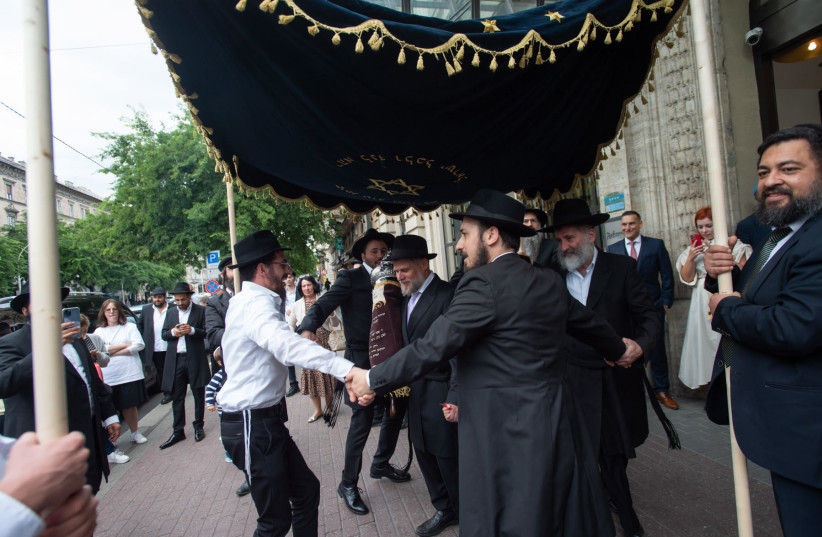
<br>Restarting the clock
Robert Deutsch was elected MAOIH president this year. When he started, he was shocked by the state of the Orthodox community.
When he entered his office “there was a pile of boxes with bottles of alcohol, the ceiling had collapsed, and there was a jungle in the corner,” Deutsch told The Jerusalem Post.
“That was the same story for the synagogue and many of the historic community buildings.”
After a century of oppression and massacres, the Orthodox communities’ institutions were but bare bones.
About 144,000 of 400,000 Hungarian Jews survived the Holocaust. Another 60,000-75,000 fled Communist oppression. There are 80,000-140,000 Jews in Hungary today. Koves and EMIH Rabbi Shmuel Glitzenstein estimated that 20,000-22,000 are active with Chabad in Budapest. Deutsch counted his community in the dozens.
After the Budapest Ghetto’s liberation, over 2,000 bodies were found, said Glitzenstein. They were buried on the grounds of the Neolog community’s Dohány Synagogue, the largest synagogue in Europe and second-largest in the world. Today there’s a sign on the gate calling for donations for the upkeep of the Jewish cemetery, the largest in Europe.
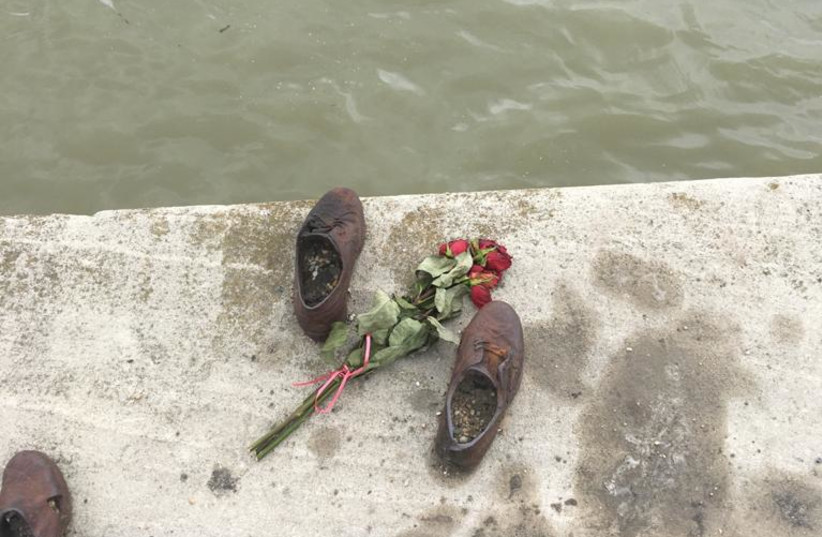
Koves estimated there were once 150 synagogues in Budapest. Now there are no more than 20, many unable to conjure a minyan, closed most of the year, largely museums.
Many Jewish institutions were destroyed by fascists or Communists, others were seized by the government.
Sometimes, the aging community simply faded away, and the places of worship were left fallow.
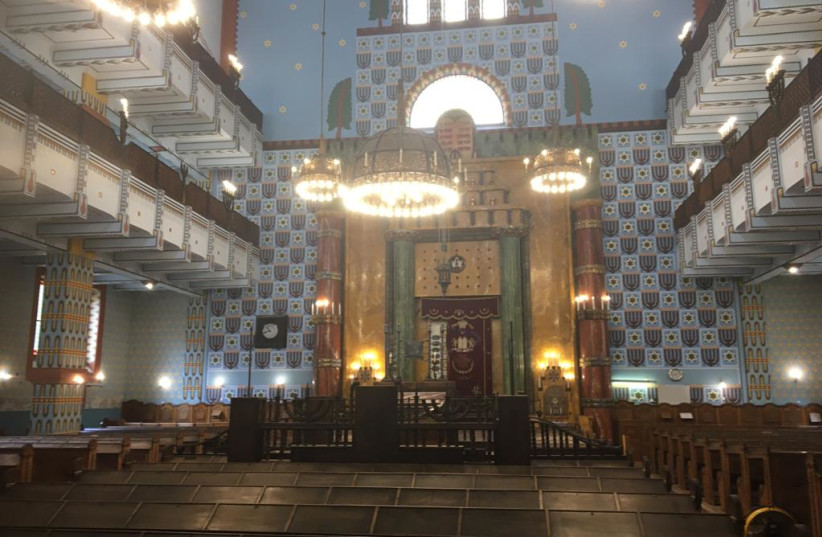
One was Deutsch’s Kazinczy Synagogue. A businessman, Deutsch ordered the community’s finances and hired accountants.
They “looked at the books and said that if it was a private company, I would throw it out and start a new one,” he said.
Instead, the community rolled up their sleeves and pursued creative solutions – like collaboration with Chabad. EMIH had funds and people that needed places to pray; MAOIH had Jewish sites but little means to restore or use them.
Today, Deutsch has an exquisite office with two antique clocks. They hadn’t chimed in ages, but Deutsch had them restored, too. When they rang, it was as if “time started again,” he said.
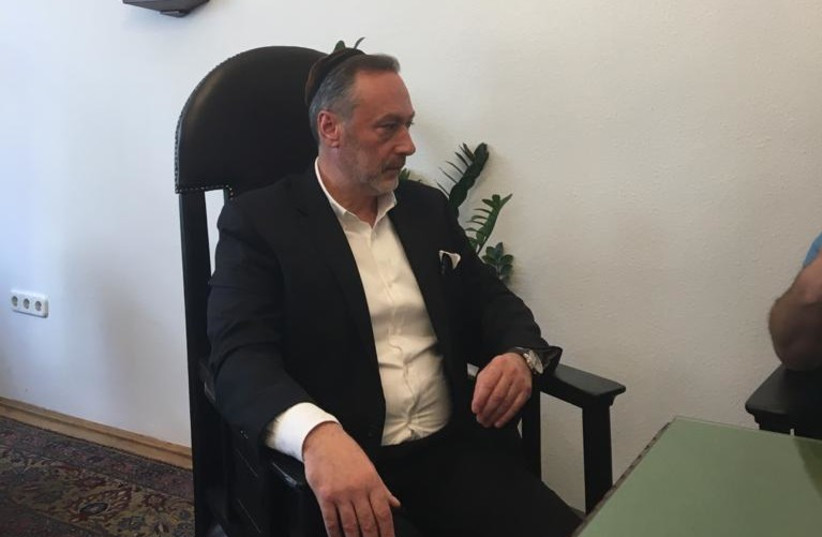
<br>The valley of dry bones
On Friday, the Vörösmarty Synagogue reopened through MAOIH and EMIH collaboration. A procession of Jews sang and danced with a Torah scroll to the synagogue. The procession attracted curious onlookers, some peeking from windows far above.
The synagogue had fallen into disuse in the 1980s. One woman remembered how the synagogue used to be, a family-oriented place.
After a mezuzah was nailed to the door, and the Torah brought into the ark, Koves spoke.
During his speech, he referenced Ezekiel’s Vision of the Valley of Dry Bones in relation to restoring the Orthodox Jewish community.
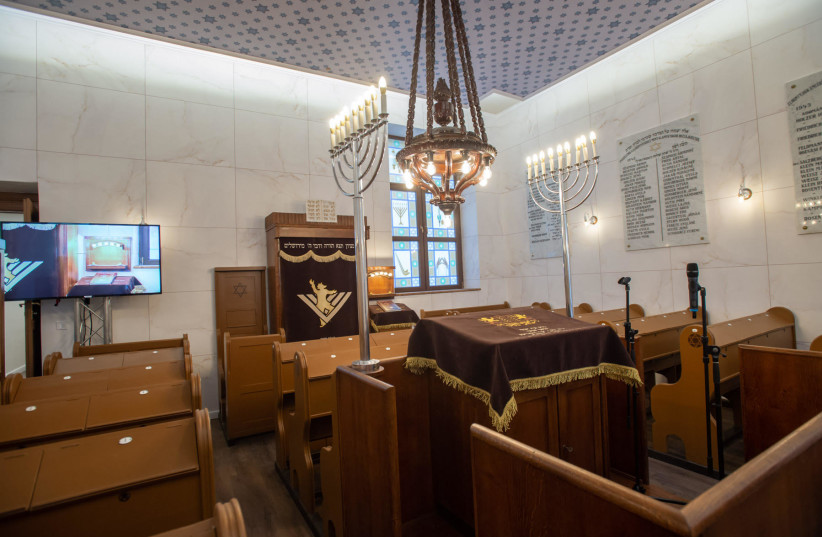
In the vision, Ezekiel saw a valley strewn with skeletons. God breathed life into the bones. Flesh grew around them, the bodies were restored. God told Ezekiel, “These bones are the whole House of Israel. Behold, they say: Our bones are dried up, and our hope is lost; we are clean cut off.” God then promised restoration for Israel.
Sunday, the community reopened the Bauhaus Bocskai Street Synagogue, the last Jewish institution to open before Nazi occupation. The Nazis used it as a stable. The Jewish community danced another freshly finished Torah inside.
“The past came back so this could be a synagogue again,” Dr. Imre Laszlo, mayor of Budapest’s 11th district, said.
August 27 marked the Óbuda Synagogue’s bicentennial, another recent restoration. The Communist regime used it as a television station.
“It used to be the most beautiful synagogue in Europe; now they’ve restored it,” Glitzenstein said. “A massive Magen David... was taken down by the Nazis. Now they’re putting it back.”
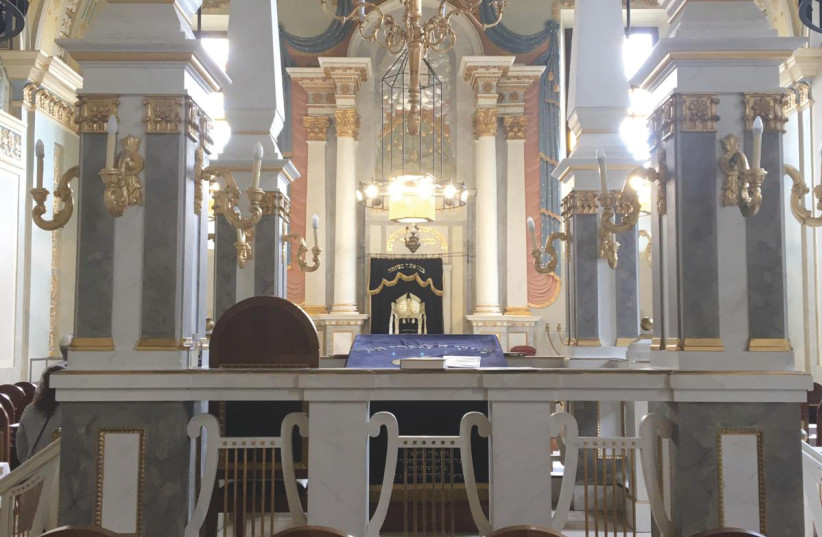
Before Rosh Hashanah, the Chabad community hoped to have another project completed: the Lenke and Simon Roth Cultural Center.
The community center is massive, with significant space dedicated to children. There is a play area, with colorful child-friendly representations of Jewish commandments painted on walls. It will house a Sunday school for 150 kids, and after-school programs for 20-30.
Typical of the complex history of Hungary’s Jews, the center is not far from the monument of bronze shoes by the Danube, memorializing mass murders of Jews and their disposal in the river.
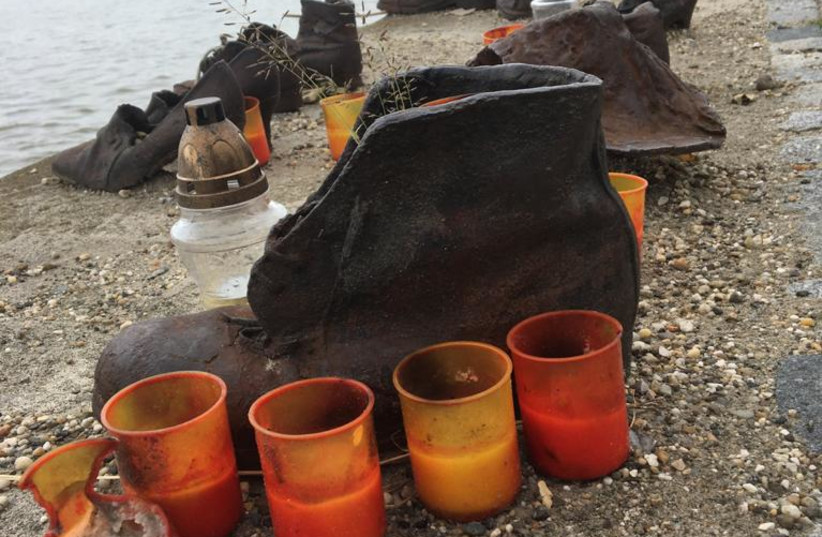
<br>Joy and trauma
Koves wasn’t born religious.
According to him, the lesson locals took from the Holocaust was to let Jewish identity die. Holocaust survivors from Budapest returned there. Living in the place of their betrayal made traumas more profound.
“There are a lot of Jews in Budapest with the same background as myself, with parents and grandparents cutting off the past.”
There was a strong push to not marry other Jews.
“My parents met and it was only by chance that they were both Jewish,” said Koves. “When my father introduced my mother to his mother, she was upset that he was marrying a Jew.”
Koves’s parents were irreligious, and he had a secular upbringing.
“When I was a kid, there were no Orthodox Jews in public. To publicly say you were a Jew was unheard of,” said Koves.
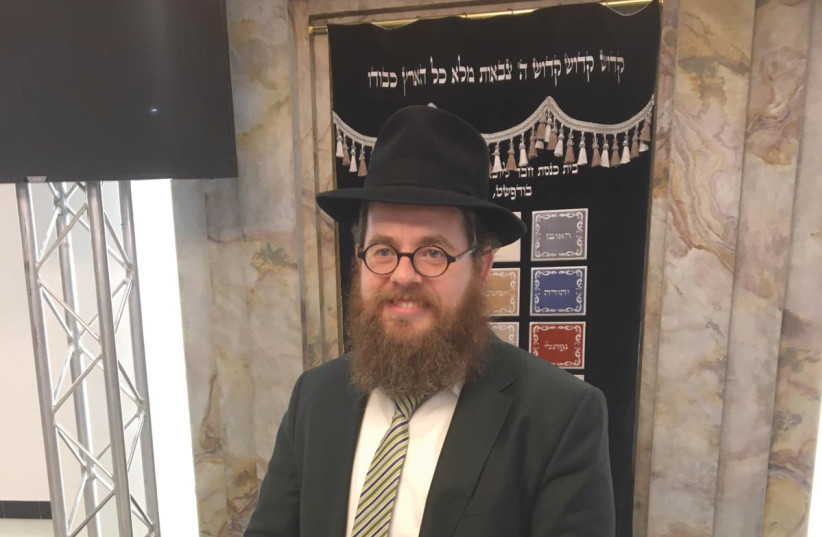
Koves was 11 when the Communist regime fell. With more freedom, he began to study philosophy. He found Judaism and a teacher, Rabbi Baruch Oberlander, and later studied at a Pittsburgh yeshiva.
Koves’s increasing piety displeased his family, but they had also felt something was always missing.
While the previous generation was wary of Judaism, the new generation was “ready to explore the past, and I believe we need to give them the opportunity to reconnect,” said Koves
“To give people a similar journey to reconnect to their heritage is a huge merit. This is a life mission... and I’m very excited about it.”
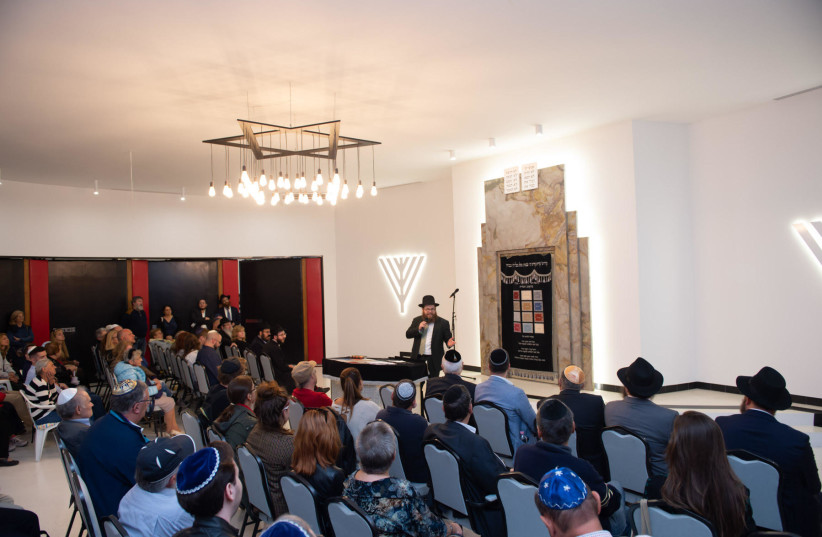
Panni Endrodi, 72, is a congregant of the restored Bocskai Synagogue. Although she was formerly an atheist, the opportunity for a community and religious meeting place changed her life.
“As a Hungarian Jew growing up, I felt like a stranger in my homeland,” she said. “The synagogue changed this, gave people the opportunity [to reconnect], making the community accessible.”
A roadblock to taking the opportunity to reconnect has been the perception of Jewish identity. The Jewish community didn’t feel culturally safe to be publicly Jewish, Glitzenstein related. Projects like the Cholent (Solet in Hungarian) Festival were created to change that.
“The main focus is to reach out to Hungarian Jews, but you can’t reach out to them without reaching out to the general public. This is why it’s open to everyone, to give them a taste of Jewish food and culture.”
First held in 2015, the festival returned in 2021 after coronavirus lockdowns. On August 29, booths with vegan, Hungarian and Israeli cholent filled the air of Újbuda Park with a hearty aroma. There was more than just stew; there were kosher fashion stalls, a play park and, notably, live performances by artists Alex Clare and Nissim Black.
Poster campaigns, festivals, processions with Torahs — Koves wanted to spread a simple message: It’s good to be Jewish. Jewishness is more than just trauma; there is also joy and pride
Detractors feared that an increased public presence would lead to increased antisemitism. A valid concern – during Friday night prayers at the Vörösmarty Synagogue, an antisemitic hoodlum attacked a worshiper.
According to Endrodi, “a lot of Jews think that if they’re less Jewish, they’ll be harassed less. It doesn’t work like this, and it leaves a hole in the soul.”

The joy evident at the Cholent Festival suggests the community’s outlook on Jewish identity is already different from that of previous generations. It remains to be seen if they will seize the opportunity to reconnect to the past through the revived Jewish institutions.
Koves believes they will. “The more we rebuild, the more will come.”
The old bones of Hungarian Orthodox Jewry are being restored, and are filling with a new breath of life – a modern miracle.
“My son asked my father if he believed in God,” said Koves. “He said, ‘I used to not believe; now I have doubts.’”
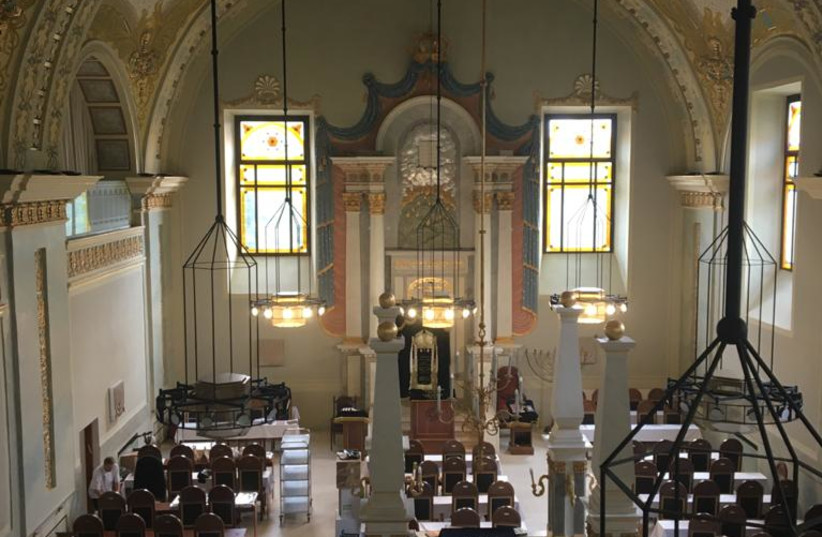
The writer was a guest of EMIH in Budapest.
